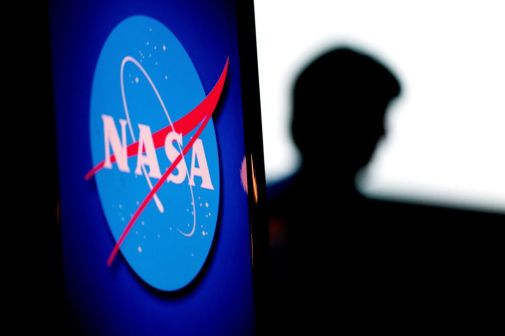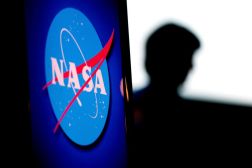NASA’s top 10 posts on Instagram for 2015
Few government social media accounts do it better than NASA’s Instagram, which has the inherent advantage of having the celestial bodies for source material. From planets to stars to space shuttles, the nation’s space agency loves to show how beautiful its work can be. Recently, NASA listed their top 10 Instagram posts from 2015, showcasing images that captivated hundreds of thousands of people over the course of the year.
Here are NASA’s picks — along with the agency’s explanations of the pictures:
10. Water on Mars
The agency announced this fall that it found the strongest evidence yet that liquid water flows intermittently on present-day Mars. Dark, narrow streaks on Martian slopes, such as those shown in this image at Hale Crater, are inferred to be formed by seasonal flow of water on contemporary Mars. The streaks are roughly the length of a football field. This picture earned 210,000 likes on Instagram.
9. Smoke Ring for a Halo
Taken by the Hubble Space Telescope, this image shows two stars shining through the center of a ring of cascading dust. The star system is named DI Cha, and while only two stars are apparent, the system actually contains two sets of binary stars. As this is a relatively young star system, it is surrounded by dust. The picture garnered 210,000 likes on Instagram.
8. Pluto’s Largest Moon, Charon
NASA’s New Horizons spacecraft has returned the best color and the highest resolution images yet of Pluto’s largest moon, Charon — and these pictures show a surprisingly complex and violent history. This high-resolution enhanced color view of Charon was captured just before closest approach on July 14. The image combines blue, red and infrared images. The colors are processed to best highlight the variation of surface properties across Charon. The picture received 216,000 likes on Instagram.
7. Veil Nebula
This image, with 220,000 likes on Instagram, shows the expanding remains of a massive star that exploded about 8,000 years ago. It is actually a mosaic of six pictures from the Hubble Space Telescope of a small area, roughly 2 light-years across, covering only a tiny fraction of the nebula’s vast structure. This close-up look unveils wisps of gas, which are all that remain of what was once a star 20 times more massive than the sun.
6. Messier 94 Galaxy
With 234,000 Instagram likes, this image shows the galaxy Messier 94, which lies in the small northern constellation of the Hunting Dogs, about 16 million light-years away. Within the bright ring or starburst ring around Messier 94, new stars are forming at a high rate, and many young, bright stars are present within it.
5. Solar ‘Pumpkin’
Posted on Halloween, this photo shows active regions on the sun combined to look something like a jack-o-lantern’s face. NASA’s Solar Dynamics Observatory, which watches the sun at all times from its orbit in space, captured the image. The picture had 247,000 likes on Instagram.
4. Italy from the International Space Station
Before drifting off to sleep, NASA astronaut Scott Kelly (@stationcdrkelly) captured this image from the International Space Station and wrote, “Day 180. Moonlight over Italy. #BuonaNotte Good night from @ISS! #YearInSpace.” It had 251,000 likes on Instagram.
3. Cosmic Archaeological Dig
With 286,000 likes, this image dazzled many Instagram users. Peering deep into the Milky Way’s crowded central hub of stars, researchers using NASA’s Hubble Space Telescope have uncovered for the first time a population of ancient white dwarfs — smoldering remnants of once-vibrant stars that inhabited the core. Finding these relics at last can yield clues to how our galaxy was built, long before Earth and the sun formed. This image is a small section of Hubble’s view of the dense collection of stars crammed together in the galactic bulge.
2. Super Blood Moon
This image shows the Super Blood Moon behind the Washington Monument on Sept. 27 in Washington, D.C. The combination of a supermoon and total lunar eclipse last occurred in 1982 and will not happen again until 2033. It received 310,000 likes on Instagram.
1. Pluto
With 363,000 likes, this image was one of NASA’s most popular Instagram pictures. NASA’s New Horizons spacecraft traveled more than nine years and more than 3 billion miles to reach the dwarf planet Pluto. This was the last and most detailed image of Pluto sent to Earth before the moment of closest approach on July 14 — reaching about 7,750 miles above the surface, roughly the same distance from New York to Mumbai, India. It marked the first space mission to explore a world so far from Earth.




